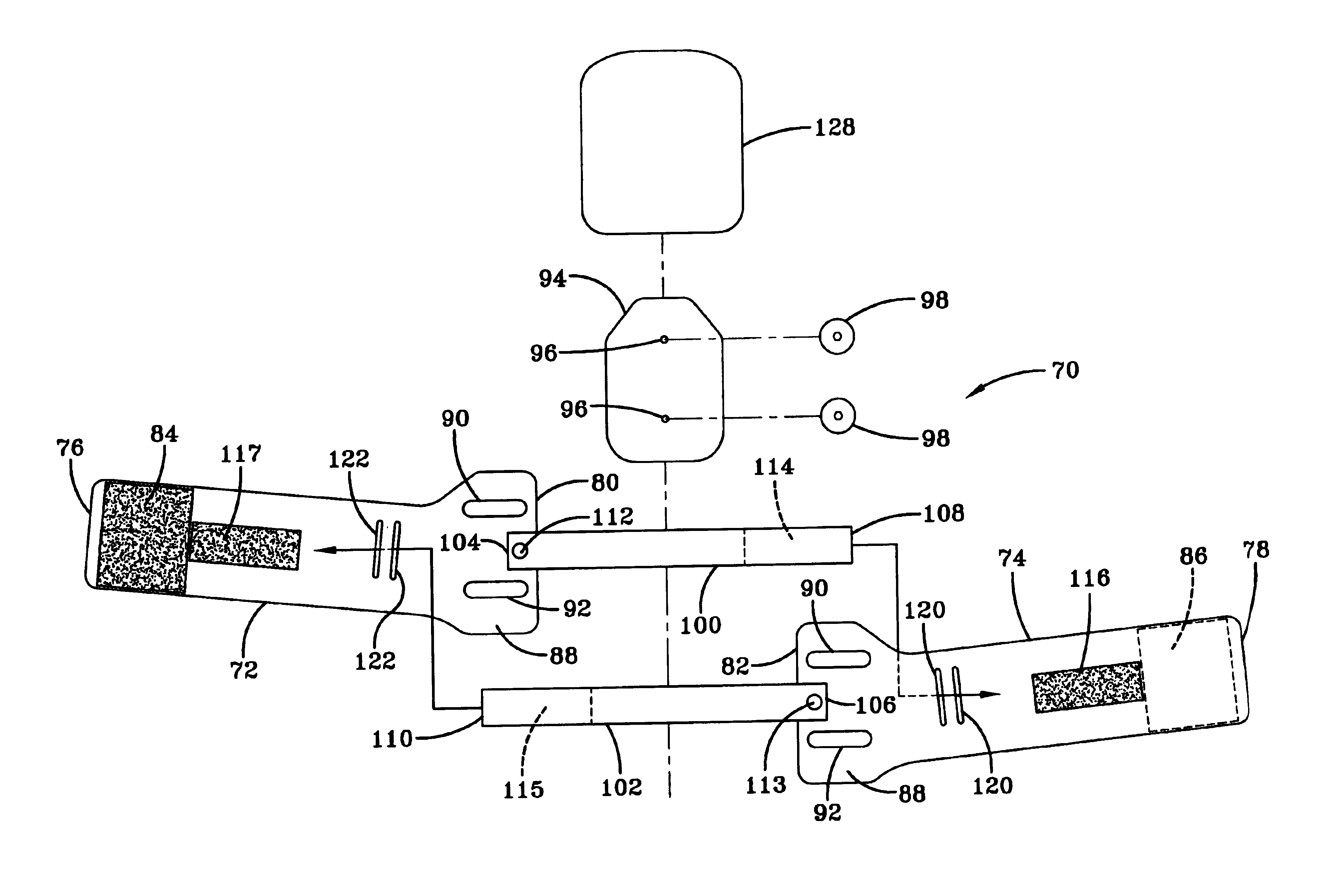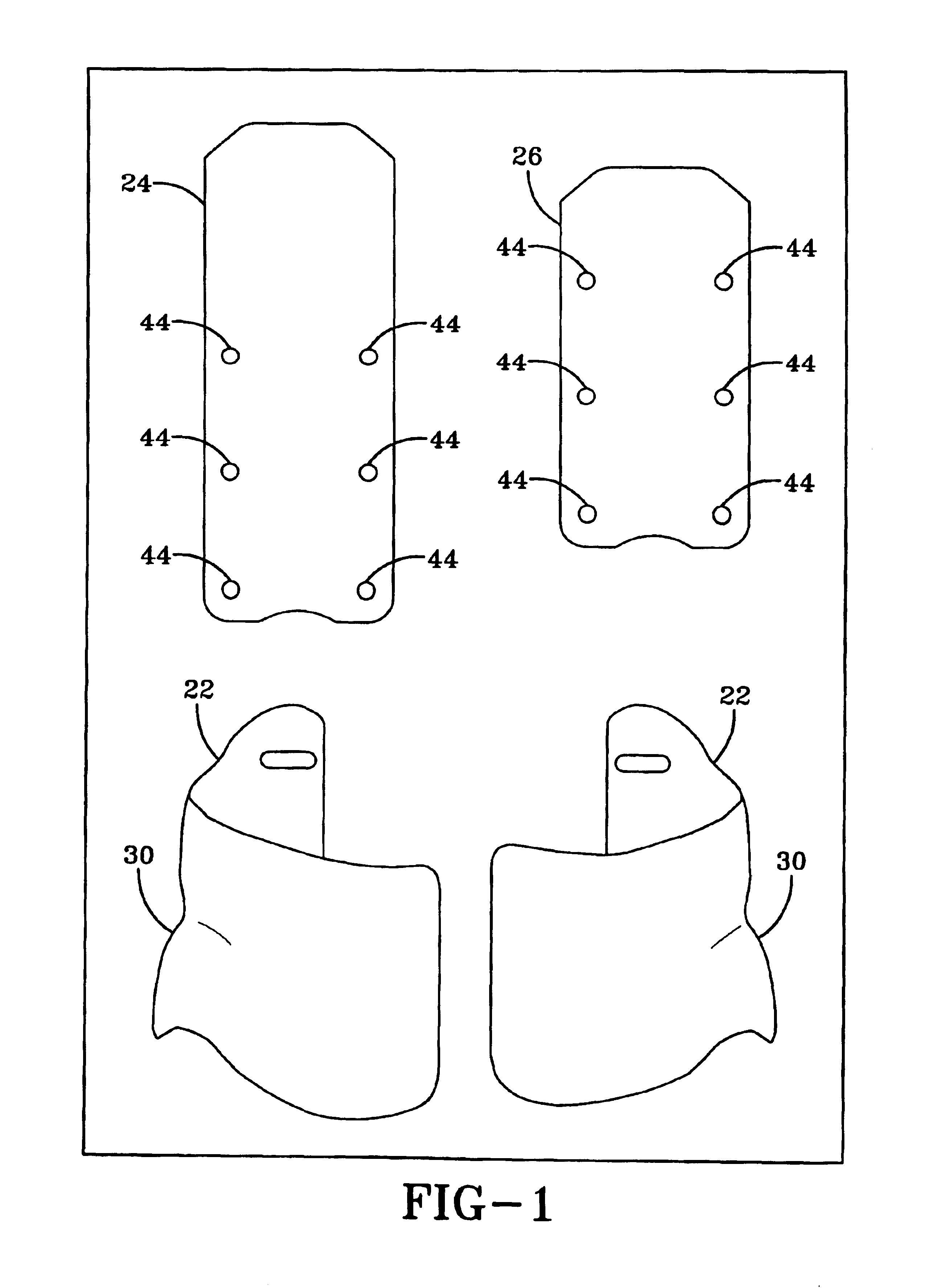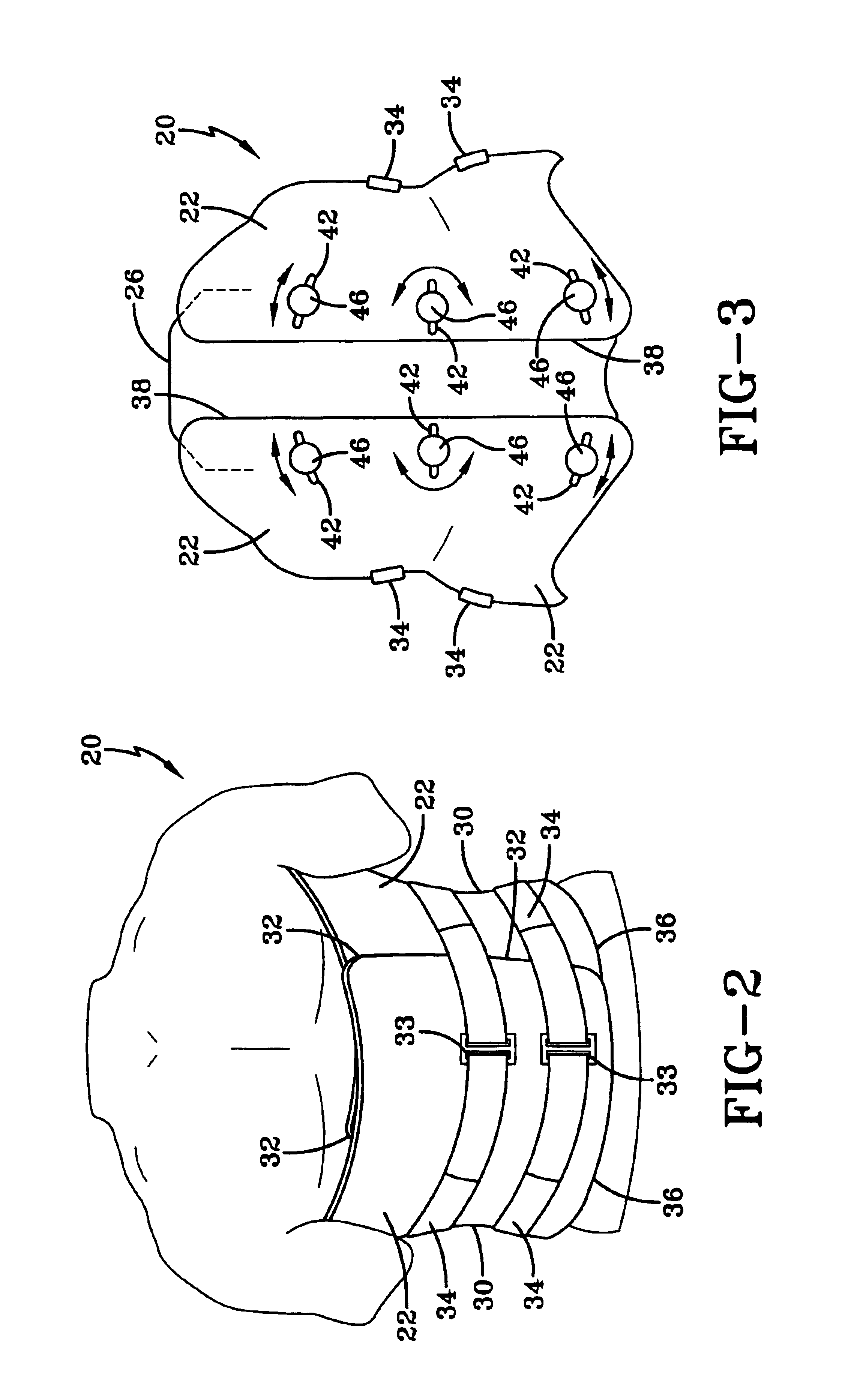Orthosis for supporting spinal structures
a technology for supporting spinal structures and orthotics, applied in the field of orthotics, can solve the problems of compromising the desired degree of immobilization, unable to adjust, and the device offers a lesser degree of stabilization and support than desired, and achieves the effect of high degree of stabilization and support, convenient custom-fitting, and efficient and effective manner
- Summary
- Abstract
- Description
- Claims
- Application Information
AI Technical Summary
Benefits of technology
Problems solved by technology
Method used
Image
Examples
Embodiment Construction
[0053]A spinal brace or orthosis, indicated generally at 20, constructed in accordance with the present invention, is illustrated in FIGS. 1-3 and includes a pair of arcuate side panels 22 and one discrete posterior panel 24 or 26. The only difference between posterior panels 24 and 26 is the height dimension which is selected depending upon whether the orthosis 20 is designed to support only the lumbar sacral region, referred to by those in the art as an LSO type, or the thoracic lumbar sacral region, referred to as a TLSO. Otherwise, for purposes of the present invention, panels 24 and 26 are equivalent.
[0054]Side panels 22 and posterior panel 24 or 26 are preferably constructed from a heat-deformable or moldable semi-rigid or rigid material, preferably a suitable plastic. The terms semi-rigid or rigid, as used herein, mean that the panels may have some degree of flexibility, yet comprise an inelastic material having sufficient rigidity to provide a high degree of trunk immobiliza...
PUM
 Login to View More
Login to View More Abstract
Description
Claims
Application Information
 Login to View More
Login to View More - R&D
- Intellectual Property
- Life Sciences
- Materials
- Tech Scout
- Unparalleled Data Quality
- Higher Quality Content
- 60% Fewer Hallucinations
Browse by: Latest US Patents, China's latest patents, Technical Efficacy Thesaurus, Application Domain, Technology Topic, Popular Technical Reports.
© 2025 PatSnap. All rights reserved.Legal|Privacy policy|Modern Slavery Act Transparency Statement|Sitemap|About US| Contact US: help@patsnap.com



